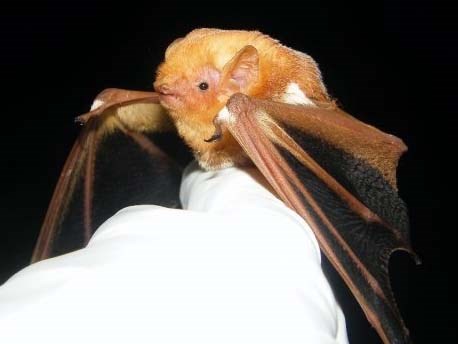Last updated: August 22, 2019
Article
Bat Population Monitoring at Cape Cod National Seashore

NPS photo / Morgan Ingalls
Bats are an important part of ecosystems and food webs. Though some species of bats feed on fruit, seeds, or pollen, all of the species that live in the Northeast are insectivores. They consume huge numbers of insects every night, filling a unique ecosystem role as nocturnal insect predators. Unfortunately, a new disease called white-nose syndrome is affecting bats across the United States. To better protect bats, scientists are studying how local bat populations are changing.
Research Highlights
- Eight species of bats have been documented at Cape Cod National Seashore. These include one federally threatened (and state endangered) species and three additional state endangered bats.
- White-nose syndrome has decimated the populations of some bat species.
- Big brown bats are likely the most common bat at the seashore.
How do biologists study bats? What have they learned about bats at the seashore?
Biologists use a variety of techniques to study bats. Bats use echolocation to navigate and catch insect prey during the night. People can’t hear these bat calls, but biologists can use special microphones, called acoustic detectors, to record the sounds. By analyzing the bat calls, biologists can identify which species are present in an area.Scientists have other creative ways of studying these fascinating animals. Special nets are used to catch bats at specific sites at the seashore. After capturing a bat, biologists can identify the species, determine the sex of the animal, evaluate its age, and examine the wings for damage from the white-nose fungus. Scientists can also attach tiny radio-tracking devices to bats and follow the bats to learn the location of important habitats.
With its diverse habitats, from dunes to interior forest, the seashore supports eight species of bats (see figure below). During recent surveys, the most frequently detected bat was the big brown bat (Eptesicus fuscus). Big brown bats are less sensitive to white-nose syndrome, possibly because of their body size or due to differences in the cave environments where this species prefers to hibernate.

Data provided by Dr. Shannon Farrell, State University of New York.
The seashore also provides important habitat for a number of regionally rare bat species. These include the federally threatened northern long-eared bat (Myotis septentrionalis). Research in the park indicates that freshwater sources, like kettle ponds, are important for northern long-eared bats. Mixed forest types are also critical for this threatened species.
The rarest bat in the seashore may be the little brown bat (Myotis lucifugus). This species was once the most common bat in Massachusetts. Due to white-nose syndrome, it is now endangered in the state. Unfortunately, little brown bats are also rare in the park—during many months of sampling, only three little brown bat calls were recorded.

Photo courtesy of Sarah-Jayne Collins.
What is the seashore doing to help bats?
Biologists continue to learn about bats and use this information to conserve bats and their habitats. Kettle ponds and forests with a variety of vegetation types are important and should be preserved. Radio-tracking of bats is helping to identify critical breeding areas. There is still much to learn and research efforts are ongoing. White-nose syndrome is an extraordinarily dangerous threat to bats—sadly, some species may ultimately disappear from the region.
Want to learn more?
For more information:
Contact Superintendent Brian Carlstrom.
Download a printable pdf of this article.
